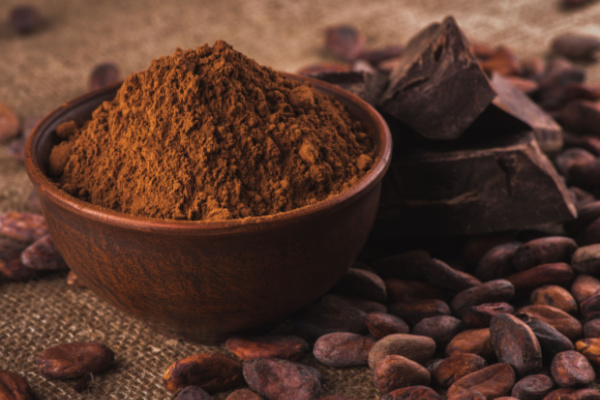Thanks to increasing demand, and of all things, El Niño, cocoa prices are rising rapidly. While higher prices can be helpful for struggling cocoa farmers, those prices, along with high prices of other key chocolate ingredients, might not be great news for chocolate lovers on a budget.
According to Market Watch, so far this year, cocoa futures have risen about 21%. As is often the case, higher prices are being driven by demand exceeding supply. This season, cocoa yields are underwhelming, likely due to crop disease and heavy rains. And next season, forecasters are expecting another deficit because of El Niño, the naturally occurring phenomenon in the tropical Pacific Ocean, which usually brings warmer global temperatures — poor conditions for growing cocoa.
But as CNN reports, demand has stayed strong, particularly in Europe and Asia, says Paul Joules, a commodity analyst for Rabobank who focuses on cocoa and dairy markets. Initially, forecasters anticipated good supply this year, said Joules. But some months back, they realized that supply wasn’t keeping pace with expectations. “Compared to the 2021/22 cocoa year, the 2022/23 cocoa season is heading towards a supply deficit due to a reduction in production,” according to the International Cocoa Organization’s monthly report for April.
Crop disease may be responsible for the disappointing results. “What we saw was, potentially, more cases of swollen shoot disease,” Joules explained. Cocoa swollen shoot virus is spread by insects and is characterized by swollen stems, among other symptoms. It has hampered production in cocoa-supplying countries for years. To fight the deadly disease, farmers often have to root sick trees out and plant replacements. It can take years for those new trees to reach peak production, Joules noted.
Other factors may have contributed to the lower yield, he said, like aging trees that don’t produce as much cocoa. Heavy rains in Ivory Coast, the world’s top cocoa supplier, might also delay crops harvested in the spring and fall, the Cocoa Organization said, adding that rain and humidity make it more likely that crop disease could negatively affect the harvest. And on top of this year’s complications, El Niño is threatening next season’s crop.
Ivory Coast could see its main cocoa harvest “suffer as El Niño climate conditions are expected to gain strength,” warned a recent post from Gro Intelligence, which analyzes agricultural data. Bad weather in the area has major implications for the global cocoa market. Ivory Coast is responsible for close to half of the world’s cocoa beans, with Ghana, Cameroon and Nigeria together contributing about quarter of the world’s supply, according to Gro Intelligence. Because of that, there is an “outsize impact of the region’s weather patterns on world cocoa prices and supplies,” according to Gro Intelligence’s post.
On the flip side, an increase in prices could offer some relief to struggling farmers. The Amsterdam-based Tony’s Chocolonely, a chocolate company that aims to reduce exploitation in the cocoa supply chain, is pleased to see prices go up. “We are very happy that cocoa prices are rising,” said Pascal Baltussen, chief of impact and operations at Tony’s. “Cocoa prices have been way too low for West African cocoa farmers to earn a living income.”
According to CNN, cocoa futures are used to determine the prices paid to farmers for cocoa in Ivory Coast and Ghana. With higher prices in the futures market, “there is good hope that price back to the farmer will be impacted positively,” said Alex Assanvo, executive secretary of the Côte d’Ivoire-Ghana Cocoa Initiative, a partnership between Côte d’Ivoire, or Ivory Coast, and Ghana that aims to establish a sustainable cocoa market and more security for farmers.
Higher futures prices are good, but they won’t last long, he noted. “Price goes up, [but] it will go down very soon, probably,” he said, based on historical trends. To help create a more stable environment for farmers, the group has worked to develop a Living Income Differential, which is charged on top of market prices to help offset volatility.
Like other confectioners, Tony’s has been hit with rising commodity prices not just in cocoa, but in other ingredients as well, such as sugar. Taken together, the increases have prompted the company to raise prices. Other chocolate companies have raised prices, as well. And the rising cocoa costs mean more price hikes could be coming.
Cocoa contracts are long, so the higher prices likely haven’t cycled through to buyers just yet. But eventually chocolate makers are likely to pay more for cocoa. During an April analyst call, Hershey CFO Steven Voskuil said that “cocoa and sugar in particular are moving in the wrong direction,” without commenting specifically on pricing. “We do expect to see potentially more impact in ’24 than ‘23,” from price increases in those ingredients, he said.
Joules suspects that consumers may well see the effect of the higher costs soon. “I don’t think the consumer has seen the full extent of the impact yet,” he said. Once new contracts are put in place, “that’s when we’ll see the full extent of the price rise for consumers.”
Any increase would come on top of already high chocolate prices in retail. In the year through April 29, compared to the same period the year before, chocolate prices went up 14.5% on average, according to data from NIQ, which tracks US retail sales.
—
Photo Credit: iprachenko / Shutterstock.com
